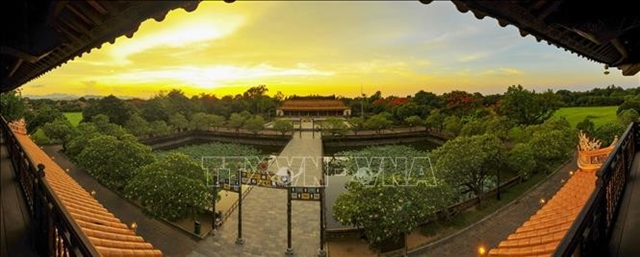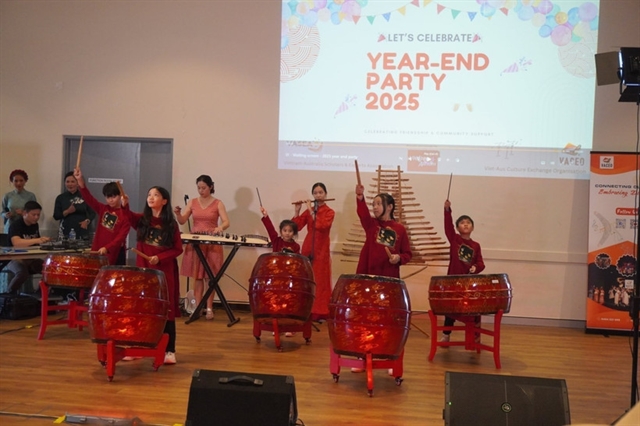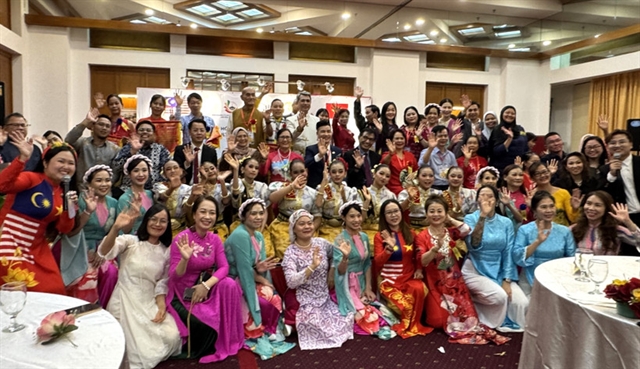 Sunday/Weekend
Sunday/Weekend

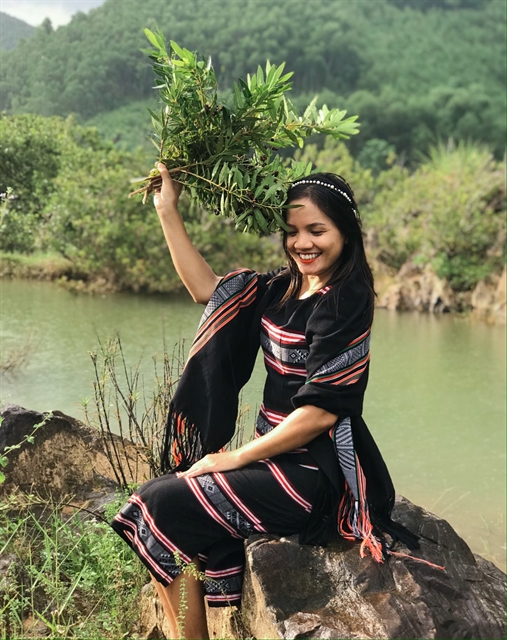 |
| WONDER WEAVER: Phạm Thị Y Hòa is pictured in a Hrê traditional dress. Photo courtesy of Phạm Thị Y Hòa |
By Lương Thu Hương
Like many Hrê ethnic youths in Teng Village in the central province of Quảng Ngãi, Phạm Thị Y Hòa is overwhelmed with pride when she wears the distinctive traditional brocade costume of her ethnic group.
The 31-year-old's social media feeds are constantly updated with photos of the Teng handloom weaving craft, which has been recognised as a national intangible heritage since 2019.
Besides traditional products like clothing, scarves or shawls, Hòa has also woven contemporary goods like handbags, ties, áo dài (traditional Vietnamese long dress) and wedding dresses, helping more customers learn about the Hrê's unique craft and inspiring locals to take part in preserving their ancient heritage.
"When I create a new product, I usually share it on my personal page to receive feedback and suggestions from friends and customers. It is also a way for me to improve my work and meet the market demand," she said.
Hòa's and other Teng villagers' efforts to promote their ancient craft have paid off, even going beyond borders. At the EXPO 2020 in Dubai, UAE, two of their handloom fabric products were showcased in the VIP area, together with 13 representative products of 10 other ethnic minorities from Việt Nam.
Hrê brocade appeared in an impressive fashion show within the international exhibition. Five creations by renowned fashion designers Lý Quý Khánh and Chula were meticulously woven by Hòa’s talented hands, impressing many fashionistas attending.
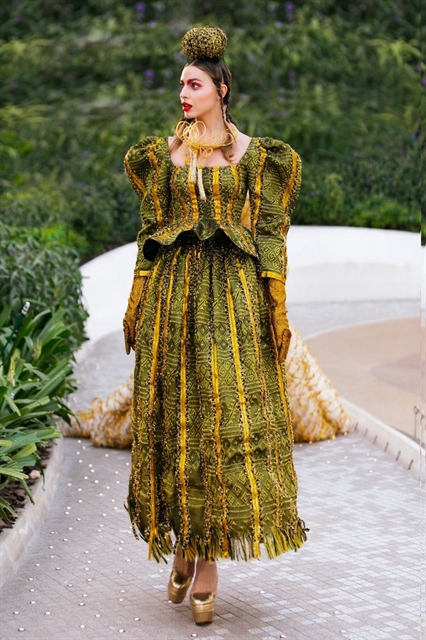 |
| MODERN TWIST: A creation by designer Lý Quý Khánh manually woven by Hòa. — Photo courtesy of Phạm Thị Y Hòa |
“After receiving orders to create the handloom fabric for the designers, I was overjoyed and determined to carry out the task,” Hòa told Việt Nam News.
“It was my first opportunity to receive an order from renowned fashion designers and to showcase my works at such a big international event. I did my best so that my artisanal fabrics – the heritage of the Hrê people – would be present at the expo."
'Unique beauty'
She said the designers requested that typical Hrê patterns account for half of the fabric used for their designs at the fair, which demanded extreme care. She can only weave around 20cm of fabric a day, so it took nearly two months to complete.
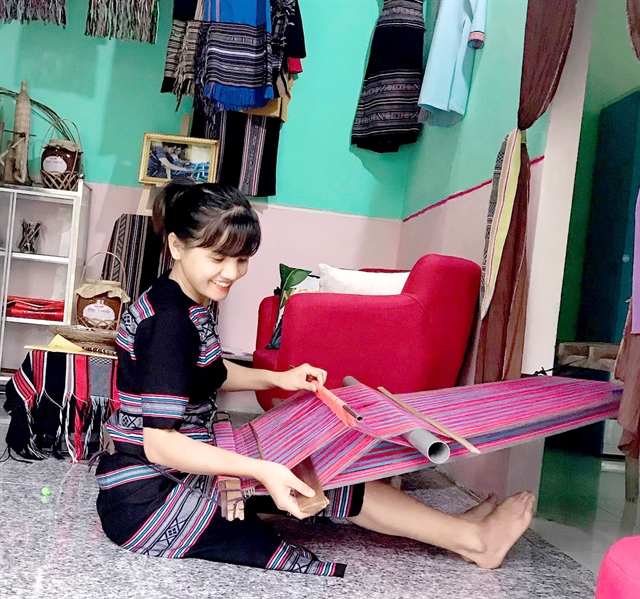 |
| ALL SMILES: Hòa was taught to weave brocade at a young age. — Photo courtesy of Phạm Thị Y Hòa |
Hòa has been able to weave since the age of 14. As a 9th grader, she earned pocket money from creating her first complete products and selling them to residents in Ba Tơ District where she lived.
Growing up, Hòa realised that the ancient weaving craft of her ethnic group, despite its unique beauty, was not widely known and losing interest from consumers, particularly the young people, due to its low price. She decided to return to her hometown in 2018, after studying away from home, to focus on commercialising Hrê traditional fabrics.
“I aimed to raise awareness about Hrê handloom fabric, and preserve the weaving craft as an indispensable cultural aspect of our lives and also as a source of income both for me and my community,” she said.
According to Hòa, the handloom fabrics of different ethnic groups often share vibrant and eye-catching colours, but the unique characteristic of Hrê fabric is undoubtedly the traditional colour palette, which consists of three main colours: white, red and black.
“However, Hrê fabric has incorporated a variety of colours these days. This is due to customers’ preferences and the influence of modern trends. Nevertheless, the dominant three colours are still preserved, and the weaving techniques remain unchanged,” she added.
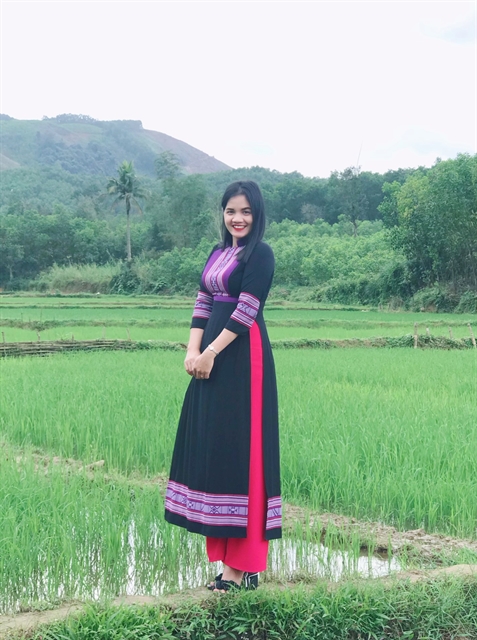 |
| ETHNIC ELEGANCE: Hòa is pictured in 'áo dài' (Vietnamese traditional long dress) crafted from Hrê fabric. — Photo courtesy of Phạm Thị Y Hòa |
Initial struggles
At first, Hòa encountered many difficulties in the preservation of her ethnic group's identity and cultural heritage.
“I had to re-explore everything about the craft, starting from the source of materials. The Hrê used to use cotton fibres, and now they have replaced them with synthetic fibres. I had to research and find the lowest possible price to reduce costs, the issue that most local weavers are concerned with," she said.
“The next issue is finding the market, or more precisely, understanding the needs of customers within and outside my community. I have to understand what they like, what they need, and what is the most reasonable price to entice them.
“Finally, it is about teaching the skills so that the weavers can understand and become familiar with innovative products and have colours that are more suitable for current trends.”
Hòa is one of the first Teng villagers to promote their products on social media and e-commerce websites instead of passively waiting for customers. She has also actively introduced the craft at many trade fairs and conferences in Quảng Ngãi and beyond.
Thanks to Hòa’s keen mindset, the handloom fabric items woven by Teng villagers have gradually won much favour from customers.
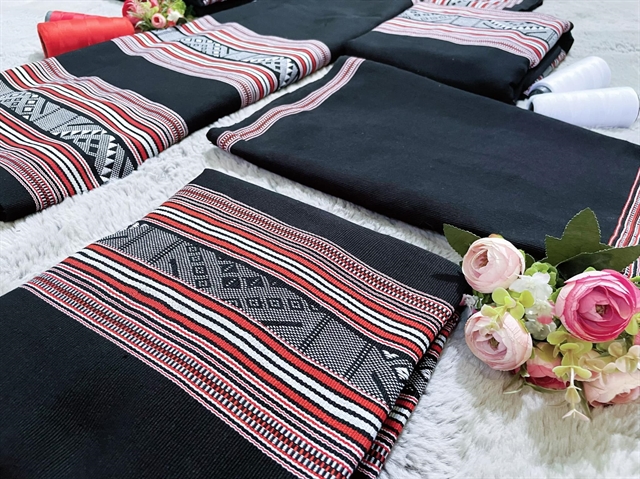 |
| UPDATED: Hòa has modernised and diversified products made from Hrê handloom fabric to attract more customers. — Photo courtesy of Phạm Thị Y Hòa |
Hòa’s products have not only been sold in Quảng Ngãi but in many other provinces and cities throughout the country. Moreover, they have been selected by the Provincial People's Committee as local souvenirs for distinguished guests, and travelled to many countries worldwide, including Switzerland, Italy, the UK and Germany.
Hòa is nurturing a plan to build a stilt house of her own where she will exhibit Hrê cultural heritage to all visitors to Teng Village. VNS

